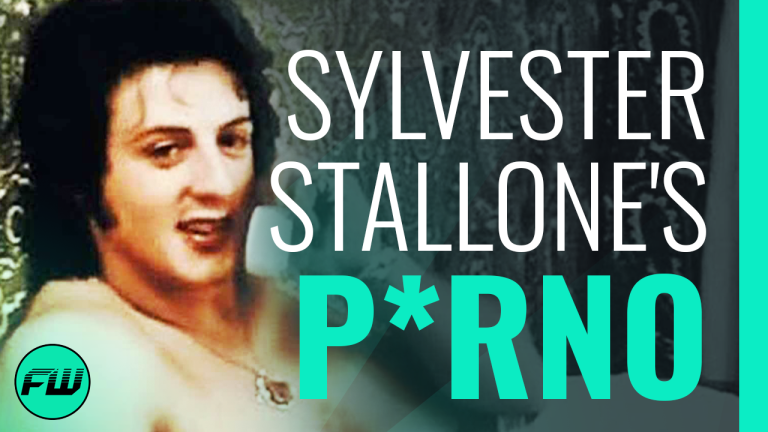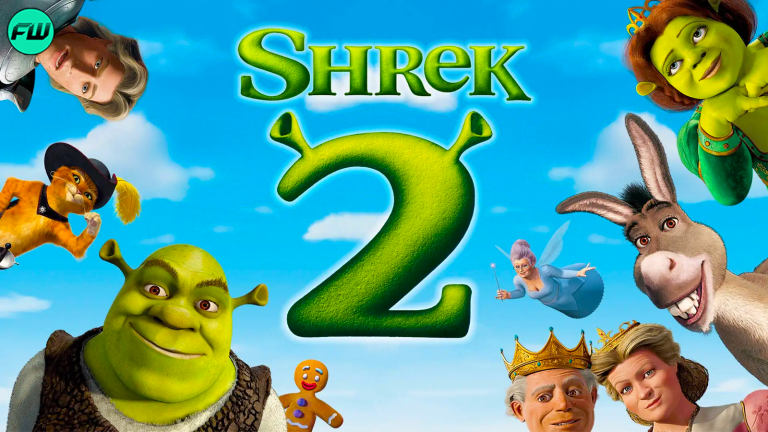This FandomWire video essay explains the crazy history of the MPA’s, formerly the MPAA’s, American Movie Ratings System
Check out the video below:
???? Subscribe & hit the Notification Bell so you never miss a video!
We’re all familiar with this. The rating of a film, as assigned by the Motion Picture Association, is designed to help audiences find entertainment that is suitable for them and their families. It’s important because parents want to shield their younger children from content that may not be suitable for them. And kids desperately want to avoid the unbearable awkwardness of seeing hanky panky on the television while sitting in between their parents on the couch. Seriously. That embarrassment never goes away.
But what exactly is the Motion Picture Association and how does it decide on a rating for each film? Well, the answer isn’t so simple. There have been a lot of changes made over the years and filmmakers often find themselves struggling to get their film the rating they want. Let’s start with the film ratings as we know them now. There’s “G” for General Audiences, PG for Parental Guidance, PG-13 which is recommended for ages 13 and up, R for “Restricted.” Meaning nobody under 17 can get into the theater without an adult. And NC-17 for “No Children 17 or under admitted.” Whether you’re with an adult or not, the theater won’t let you in unless you’re at least 18 years old. The NC-17 rating formerly went by the “X” rating, but that became too closely associated with…
Back in the mid-1930s through the ’60s, there was the Motion Picture Production Code, also known as the “Hays Code.” This wasn’t a rating system, it was more along the lines of censorship. They pretty much decided what was appropriate or not appropriate for public audiences, and dictated what filmmakers could put into their films. Motion Pictures were still fairly new and the fear was that they would corrupt or lower the moral standards of the general public unless they were closely monitored and controlled. The code wanted to shield audiences from things like ridicule of the Clergy, sympathy for criminals, or inappropriate use of the American Flag. You know, grotesque things of that nature.
Related: How To Craft The Perfect Time Travel Movie (VIDEO)
The Hays code lasted for several years, but it began to fall apart in the 1960s. Audiences wanted to choose for themselves what was acceptable viewing and filmmakers wanted the freedom to create their visions. The Supreme Court even got involved and ruled unanimously that the code was violating the filmmaker’s first amendment right to freedom of speech. So, in 1968 we got the first MPAA rating system. The rating system has been tweaked and reworked over the years, but the biggest change was the addition of the PG-13 rating in 1984. Prior to the 1980s films were either rated G, PG, R, or X. Without the PG-13 rating, a lot of violent content was getting passed off into the PG film category. Movies like Temple of Doom and Gremlins had parents shielding their young ones’ eyes and clutching their pearls. So, following a recommendation from a little-known director named Steven Spielberg, the MPAA agreed to include a rating in-between PG and R, and the PG-13 rating was born.
The first film to be released with the new rating was Red Dawn. A war film that saw high school students fighting off an invasion of soviet soldiers in their small hometown. The film boasted a large cast of talented up-and-comers like Patrick Swayze, Lea Thompson, Charlie Sheen, and Jennifer Grey and was a moderate success at the box office.
The PG-13 rating has become one of the most frequently used rating in filmmaking and has proven to be the most profitable rating for film studios by far. Between 1995 and 2021 PG-13 rated movies grossed over 112 BILLION dollars at the box office. That is a HUGE amount of cash and far greater than R-rated films, which took the second-place spot with over 63 Billion. This is because PG-13 films are available to a much wider audience than an R or NC-17 rated films. While R-rated films are geared primarily towards adults, a PG-13 rated film is one that parents could take their older, and sometimes even younger, kids to go see. More people watching means more ticket sales which means more money. And while this is true of G and PG-rated films as well, those ratings are primarily reserved for animated films and films geared towards a younger audience and tend to not to draw as big of a crowd.
So, of course, many studios aim for that PG-13 sweet spot, especially with their bigger budget projects. But getting that rating can sometimes be tricky. The guidelines that dictate a film’s rating are always changing and often leave a lot up for interpretation. Nudity, including bare breasts, are normally thought to be reserved for R-rated fare. Seeing more than a passing glance of nudity in a PG-13 movie can catch many people off guard, as it did with Titanic all the way back in 1997. However, according to the Motion Picture Associations’ “Classification and rating rules,” a PG-13 rated film may contain more than just “brief” nudity as long as the nudity is not sexual in nature. So Kate Winslet gets a pass as Leonardo DiCaprio’s artistic muse in the award-winning blockbuster.
The Classification and ratings rules also state that “A motion picture’s SINGLE use of one of the harsher sexually derived words, though only as an expletive, initially requires at least a PG-13 rating. More than one such expletive requires an R rating, as must even one of those words used in a sexual context.”
So what does that mean? Well, we all know what “Word” they’re referring to. That harsh, four-lettered “F” word. A PG-13 film can use that word only ONCE. And, again, only if it is not in a sexual manner. Look at Live Free or Die Hard. The fourth film in the popular, action-packed Die Hard franchise and the first in the series to be rated PG-13. The film gets by with its rating despite the use of John McClain’s famous catchphrase. However, the Motion Picture Association would not allow the “er” at the end of the foul, four-lettered word without bumping the rating up to an “R.” The production team got around this by having the sound of the gunshot ring out as the expletive was being spoken and essentially hiding the “er” at the end of the catchphrase. This was changed for the DVD release and the full catchphrase could be heard unobscured on the “Unrated” title once again. This is what a lot of films are doing nowadays. They release one cut for the theaters and then release an “Uncut” or “Unrated” version on DVD and Blu-Ray. The “Unrated” title simply means it has not been viewed and rated by the MPA and the film is free to contain whatever the filmmakers and production team want.
Related: The Horror Trope of the Final Girl (VIDEO)
Most studios avoid NC-17 ratings altogether. There’s really no way to make money with the rating because most theaters refuse to show an NC-17 rated film. And even if they do, most of the general public won’t go see them. This is an issue that many filmmakers run into when trying to tame down their visions enough to be granted an R rating. Trey Parker and Matt Stone, creators of South Park, ran into issues with the ratings board while trying to release their film Team America: World Police. The political satire featuring an all-puppet cast certainly showcases plenty of crude and mature content, but it was the puppet sex scene that proved to be the film’s biggest hurdle. The filmmakers sent in 10 different cuts of the scene, each time removing a little bit more of the raunchy puppet on puppet action. Finally, on the tenth cut, the rating board granted the film its R rating.
That’s not to say NC-17 films aren’t still being made. Plenty of NC-17 rated films have gone on to develop cult followings and massive fan groups. Movies like Killer Joe, Lust, Caution, and Showgirls have earned their place in pop culture as perfect examples of movies that push the boundaries while also being great films… or in some cases, film’s that are “so bad they’re good.”
And Midnight Cowboy holds the honor of being the only X-Rated film to ever win Best Picture at The Academy Awards. The 1969 film was released before the rating was retitled to NC-17 and features Jon Voight as Joe Buck, a cowboy sex worker. And Dustin Hoffman as Ratso Rizzo. A con man who acts as his pimp. Since its release, the film has found its place on numerous lists of the greatest films of all time and was selected for preservation in the United States National Film Registry.
Even trailers get ratings in the form of Green Band and Red Band trailers. The typical trailer that most of us are used to seeing is the Green Band trailer. These are the trailers that play before the majority of movies in theaters. The Green Introduction simply means there’s nothing in the trailer that would be deemed inappropriate. It’s okay for general audiences. The Red Band is essentially an R-rated trailer. It can feature violence, blood, foul language, and even nudity. These trailers are only allowed to be played before an R or NC-17 rated movie, or they can be released online.
Filmmakers sometimes even have to find clever ways around the restrictions of trailers. The trailer for IT features a scene where a black, tar-like liquid blasts upward from a sink drain. Fans of the book were quick to complain, pointing out that the substance is supposed to be blood. Turns out it is blood, but blood can’t be shown in a green band trailer, so filmmakers changed the color in order to get it past the rating board.
When it comes to ratings there are plenty of clearly defined rules. If drug use is present in the film, it’s not going to be rated below a PG-13. That’s a strict, clearly defined rule. But there’s still plenty of gray area in-between. A movie can be rated R for gore, nudity, drugs, language, etc. But what if a movie has none of that and still lands an R rating? That’s what happened with James Wan’s The Conjuring. The film was essentially deemed to be too scary and was rated R for the intense “Terror.” Rather than appeal the rating or try to recut the film, filmmakers saw this as a great promotion for the movie. I mean, it’s a horror movie being called too scary. You can’t get better praise than that.
The Motion Picture Association continues to evolve and update their standards. Becoming stricter on some things and laxer on others. And whether you agree with the rating system or not, it’s likely here to stay in one form or another.
Follow us for more entertainment coverage on Facebook, Twitter, Instagram, and YouTube.












